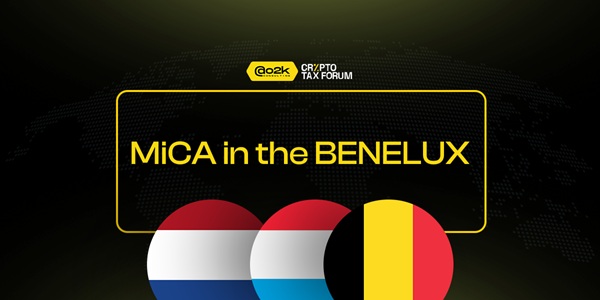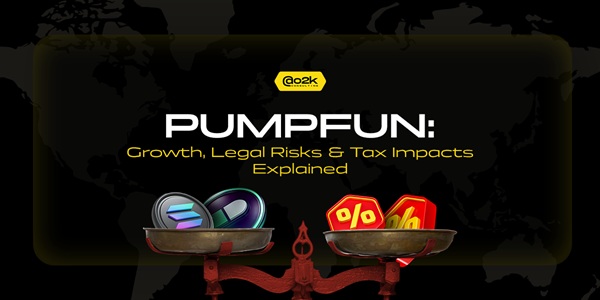INTRODUCTION
Dogs. Cats. Frogs and Hippos.
If you have been around the crypto arena for some time, you must have heard stories of individuals who turned millionaires overnight from buying some animal-themed internet coins. Similarly, you must have also heard stories of those who lost their life savings overnight from these coins as well.
The culprit: memecoins.
This article will provide insight into memecoins, how they derive value, how to research them and the risks associated with trading them.
WHAT ARE MEMECOINS?
Memecoins are a type of cryptocurrency inspired by memes, trends, events or internet sensations.
Unlike other cryptocurrencies, memecoins are created without a specific intent; hence, they typically do not have a defined use case. Over the years, memecoins have gained popularity in the financial market due to the potential for generating rapidly high returns for investors.
Brief history
Cryptocurrencies are typically created with a specific purpose, often serving as utility or governance tokens. However, this dynamic shifted with the introduction of memecoins. The history of memecoins dates back to the year 2013 with the creation of Dogecoin. According to the creators Billy Markus and Jackson Palmer, Dogecoin was initially created as a joke, based on a popular internet meme at the time and nothing more. At the time, memecoins were regarded as jokes in the crypto world as nobody took them seriously.
A few years later, Dogecoin gained widespread popularity after it got the attention of Elon Musk, Mark Cuban and some other influential individuals. After that exposure, Dogecoin successfully rose to the top 10 list of cryptocurrencies, thereafter birthing a new asset class within the crypto trading industry.
How memecoins are generated
Memecoins are often inspired by random concepts like memes, emojis, animals, numbers, or social media trends. For example, if an influential figure like Donald Trump or Elon Musk makes a viral social media post, some individuals may create a memecoin based on it. Memecoins may also originate from any random viral social media content. A recent example is the viral TikTok video of a hippo, which inspired the creation of the Moodeng memecoin, now boasting a market capitalization of $200M.
.webp)
Memecoins can also be inspired by sensational events and occurrences. For example, the $EAR memecoin was created by an anonymous individual following the assassination attempt on Donald Trump on July 13, 2024. It was given the ticker $EAR because the bullet struck his ear. The idea behind creating memecoins like this is that, due to the virality of such events, traders and individuals alike may be drawn to invest in a token that commemorates or resonates with the occurrence.
How memecoins get their value
Memecoins are not utility tokens, so they have no intrinsic value. Their value is primarily driven by hype, community engagement, social media trends, news, cultural narratives, and sometimes endorsements from celebrities and public figures. Essentially, the more people talk about a memecoin, the more awareness it gains, leading to increased investment from those hoping for significant profits.
Similarly, the value of a memecoin can skyrocket when it catches the attention of influential individuals. For example, Dogecoin gained significant traction after Elon Musk and Mark Cuban began endorsing it on social media.
In addition, successful memecoins with high trading volumes can attract the attention of centralized exchanges and get officially listed. Some memecoins may even end up having a utility ascribed to them. For instance, Tesla accepts payment in Dogecoin.
Why do people invest In memecoins?
Despite the risks associated with memecoins, people invest in them for several reasons, including the following:
- Speculative Gains: Memecoins are known for their potential to offer quick and exponential profits. Early investors in popular meme coins like Dogecoin made significant profits, motivating others to pursue this high-risk, high-reward path to potential financial freedom.
- Community Hype: Some memecoins have a strong social media presence, with hype and endorsements from influencers. This creates a fear of missing out (FOMO) among many, leading them to invest.
- Low Barrier Entry: Unlike other cryptocurrencies, memecoins are relatively cheap and easy to buy. Additionally, there are no KYC (Know Your Customer) requirements for trading memecoins on decentralized exchanges.
- Airdrops: Holders of certain memecoins, like BONK, often receive seasonal airdrops. This encourages others who want to benefit from free airdrops, to invest in memecoins with the hope of receiving future rewards.
Popular memecoins
Some popular memecoins of 2024 and the inspiration behind them are as follows:
- Moodeng: Inspired by a viral baby hippo named Moo Deng from Thailand's Khao Kheow Open Zoo.
- Dogecoin: The first-ever memecoin, inspired by a viral meme featuring a dog named Kabosu.
- Mother: A memecoin created by American rapper Iggy Azalea
- Miggles: Inspired by a viral video featuring a Himalayan cat enjoying treats.
- Sundog: The flagship dog-themed memecoin of the Tron ecosystem.
- Dogs: A dog-themed memecoin of the Ton ecosystem, inspired by a character called Spotty.
- MAGA: A Donald Trump-themed memecoin, named after his famous slogan "Make America Great Again."

TRADING MEMECOINS
Memecoins are primarily traded on decentralized exchanges, though they are sometimes available on centralized exchanges as well. They can also be traded using Telegram trading bots, which many active traders prefer for swift, automated transactions. Some popular trading bots include: Maestro, Sol Bot, SunBot etc.
The memecoin trading scene changed significantly in January 2024 with the launch of PumpFun, a memecoin generator on the Solana blockchain. This platform is the first of its kind, that completely transformed how memecoins are created. Now, anyone can generate a memecoin in minutes for less than $5, without requiring any technical expertise. Since its launch in January 2024, over 2 million memecoins have been created on PumpFun, with an average of 20,000 tokens generated daily. PumpFun's success has no doubt inspired the launch of similar platforms, such as SunPump, Moonshot, and Satspump.
The rise of these user-friendly memecoin generator platforms has raised significant ethical concerns, as majority of the tokens created are dumped within minutes of their launch. This trend makes it increasingly difficult to sift through the hundreds of coins generated daily and identify genuine ones, ultimately leading to a surge in pump-and-dump projects.
RESEARCHING MEMECOINS
Researching memecoins is most effectively done using crypto analytic tools such as CoinGecko and DexScreener. A faster alternative is the use of crypto analytic bots on Telegram. These bots operate by receiving commands; by pasting the contract address of your chosen memecoin, you can quickly access comprehensive information about the coin, including sources for further research. One useful Telegram bot is TTFBOT.

It’s important to note that using research websites like CoinGecko and CoinMarketCap only works for coins that are listed on these platforms. Unfortunately, not all memecoins are listed, which is where these analytic bots come in handy. When researching memecoins, it is important to consider key factors such as market performance, liquidity, community size and engagement, social media presence, and tokenomics. Additionally, investigate whether the coin or its associated developers have been involved in any past rugpulls and scams.
REGULATORY CONCERN
Memecoins are under increasing scrutiny from regulators. Authorities are particularly concerned about investor protection, fraud, and market manipulation. In the U.S., the Securities and Exchange Commission (SEC) has been actively assessing whether certain memecoins qualify as securities, currencies, or commodities, which would subject them to stricter regulations. This scrutiny has resulted in heightened enforcement actions against projects deemed non-compliant.
Globally, the regulatory landscape for memecoins remains fragmented due to the absence of clear definitions and classifications. Different countries are taking varied approaches to oversee this emerging market. For example, Japan and the European Union are working on comprehensive regulatory frameworks that may include specific guidelines for memecoins. To address the risks associated with memecoins, regulators are focusing on measures to prevent fraud and ensure compliance with Anti-Money Laundering (AML) and Know-your-customer (KYC) requirements. Tax authorities are also beginning to clarify how transactions involving memecoins should be reported. In the U.S., for instance, memecoins are treated as property, meaning that selling or exchanging them triggers capital gains tax.
Overall, the regulatory landscape for memecoins is still evolving. Nonetheless, compliance with regulatory standards will likely play a crucial role in shaping the future development and adoption of memecoins.
RISKS
Memecoins are considered a high-risk asset class due to the presence of the following factors:
- High Volatility: Memecoins are extremely volatile. With price fluctuations driven largely by hype, it becomes challenging to predict their price movements through technical market analysis.
- Lack of Utility: Unlike traditional cryptocurrencies such as Bitcoin and Ethereum, memecoins often lack a clear use case. Their prices are primarily driven by speculation, increasing the risk of a sudden dump in price.
- Pump and Dump Schemes: Some investors may artificially inflate the price of a memecoin to attract others to buy in, only to sell off their holdings and leave later investors with worthless tokens. This manipulation poses significant ethical concerns, as early investors can exploit later ones for liquidity.
- Rug Pulls: Developers can abandon a project, taking with them any funds raised from investors, which results in total losses for those who bought in.
- Security Risks: Many memecoins do not undergo thorough security audits, increasing the likelihood of scams, hacks, or smart contract vulnerabilities, which could lead to the loss of funds.
- Liquidity Risk: Some memecoins may have low liquidity, making it difficult to buy or sell large amounts without significantly impacting the price. This situation can leave traders trapped in positions they cannot easily exit.
- Anonymity of Developers: There is usually no information about the team behind majority of memecoins. This anonymity makes it easier for them to engage in fraudulent activities without facing legal consequences.
- Regulatory Uncertainty: Most meme coins operate in a legal grey area as regulators struggle to define, classify, and regulate them.
- Lack of Transparency: Many memecoins do not provide clear objectives regarding their tokenomics and roadmaps. This lack of transparency can render them unsustainable in the long run.
With these risk factors in mind, potential investors must exercise caution and conduct thorough research before engaging with these cryptocurrencies.
CONCLUSION
Memecoins, which began as a joke, has now become a significant asset class in the financial market, boasting a market capitalization of over $45 billion. Truly, memecoins have successfully carved out a niche in the crypto space, influencing not only the cultural landscape but also the financial and technological aspects of the cryptocurrency world.

Thanks to their user-friendly nature, memecoins are attracting a new wave of investors not previously interested in cryptocurrency. This increase in participants is contributing to greater crypto adoption and expanding the trading and investing scene.
As regulations of memecoins continue to evolve, it is essential for anyone considering trading them to conduct thorough due diligence to avoid potential losses. Traders are, therefore, encouraged to approach the memecoin market with caution; while these assets can offer opportunities for quick gains, they also come with significant risks that require careful consideration.



















.jpeg)


























.jpg)






































